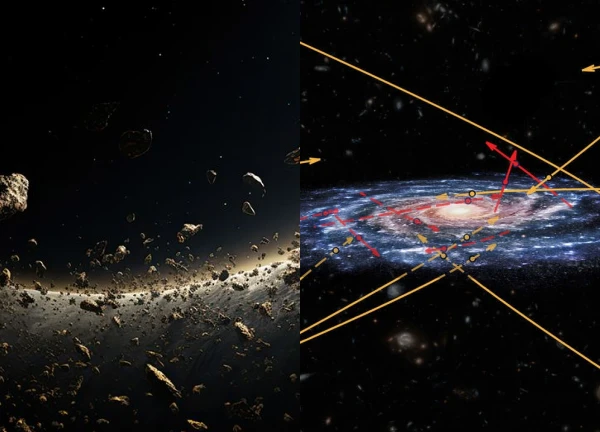Revealing the place where Queen Uyen Dung left, it took 7 years to 'debunk' the secret that scared posterity

4 | 0 Discuss | Share
It can be seen that although they are less active than wild chimpanzees, they still have strong muscles
Before answering this question, let's take a look at some pictures of chimpanzees in the zoo to see if their muscles really grow?
We all know that animals kept in zoos will have a much narrower range of life and movement than their wild counterparts, it can be seen that although they are less active than wild chimpanzees, wild, but they still have strong muscles like those who work hard at the gym every day.
It is a fact that powerful animals on land are hardly active during the day and they do not seem to be as active as we do in the gym. Lions sleep nearly 20 hours a day, hippos spend the day in the water, only come ashore to feed at night by walking slowly, elephants, buffalo, orangutans and other carnivorous animals Other animals also spend all day eating and drinking without ever exercising like humans.
If they do not eat, their time is to rest, save energy to the maximum, to spend energy on hunting, running away or fighting with enemies. But even so, their muscles are still very developed, and they obviously also possess great physical strength. We all know that people who practice hard and hard to be able to own beautiful muscles, just stop exercising for a while, the muscles will gradually disappear and be replaced by fat.
If you want to maintain peak muscle mass, fitness and strength then you need to exercise regularly and without interruption, this is especially true for professional bodybuilders and athletes. strength and endurance athletes.
However, sometimes there are exceptions in humans. Around 2000, at a hospital in Germany, a baby boy was born that immediately attracted the attention of doctors.
By the age of 4 and a half, this boy was able to lift a 3kg dumbbell with both hands, his muscles had grown twice as much as that of children of the same age while his body fat was only half that. It is known that this boy's mother used to be a professional sprinter, has relatively strong muscles, his brothers, father and grandfather are all healthy people. It is said that this boy's grandfather is a construction worker who can load and unload 150kg of stone with his bare hands.
The boy's doctor, Schuelke, suspects that his condition is related to a syndrome called Myostatin - also known as growth and differentiation factor 8 (GDF-8). This syndrome was first discovered by Dr. Se-Jin Lee, a geneticist at Johns Hopkins University in a study on mice in 1997.
When the GDF-8 protein synthesis gene was removed, the mice's muscles became very developed - twice as much muscle mass as their normal counterparts. In 2007, Se-Jin Lee discovered that a second protein follostatin involved in muscle growth, genetically engineered in mice without myostatin, produced excessive follicle suppression that helped The muscle growth efficiency is 4 times higher than that of normal mice.
Schuelke tested the boy and his mother's myostatin gene for mutations. Of the corresponding alleles, only one of his mother's genes was abnormal, while this boy had two abnormal gametes, meaning he was unable to synthesize myostatin. This genetic mutation reduces the factors that inhibit the boy's muscle growth, so he has a stronger muscle growth rate than the average person.
Animals in the wild also have the GDF-8 mutation, and after humans noticed that domestic animals had abnormal levels of muscle growth, they bred them to have homozygous inherited traits. stable transmission, such as the Belgian blue-and-white guinea pig. The gene mutation causes myostatin deficiency and accelerates muscle growth in this breed.
Now let's go back to the original question. Why do gorillas, chimpanzees and kangaroos barely need strength training and their muscles are still extremely developed?
Through many studies, we know that muscle growth is controlled and regulated by more than a dozen genes and many proteins in the body. Different individuals will have different development. For example, with the same intensity of exercise and nutrition, there will still be people who develop muscle quickly and bring clear results, while others do not. Therefore, the difference between the human body and the animal is so great, the innate genetic code will determine their existence.
The competition for survival in the wild is extremely brutal, so almost every animal has evolved towards developing its own survival mechanisms and competitive strategies, and muscle development is also one of all. More muscle means increased energy consumption.
However, despite having a slimmer and less muscular body, we still consume a lot of energy to maintain the body's activities, humans consume 400 calories more than chimpanzees, 635 calories. compared to gorillas and 820 calories compared to chimpanzees...
The human brain is a large energy consumer, although it only accounts for 2.5% of body weight, it consumes 20% of energy at rest. If humans have developed muscles like animals, they eat and drink non-stop or spend a lot of time resting in a day, then with the hunter-gatherer method of our ancestors, it is completely unsatisfactory. .
The end result of evolution is that humans have given up on developing muscles, instead developing a strong body structure, developing heart and lung system, increasing metabolism, developing brain. smarter and more resilient, more active. Although we still do not know how this process is formed and how the specific mechanism in this process is, this well-balanced and effective survival strategy has enabled the human species to become a population. The most powerful creature on Earth.
Difference between gorillas and chimpanzees
Of all the primates, the gorillas are the largest. They are distributed in Central and West Africa, and there are only two species of gorillas, named Western (gorilla) and Eastern (beringei gorilla). Eastern gorilla ranges in some Central African countries viz. Uganda and Rwanda, while western gorillas live in Cameroon, Nigeria, Angola, etc... their habitat ranges from tropical to subtropical forests. Adult males are called silverbacks, they are from 1.5 to 1.8 meters tall, weighing from 140 to 200 kg.
Normally, an adult female is about half the size of a silverback. The structure of the skull exhibits the characteristic mandibular structure, which is the protrusion of the lower jaw further than the upper jaw. They depend on an herbivore diet consisting mainly of fruit. Coat color is dark, mostly dark brown.
Chimpanzees, on the other hand, are the most intelligent of the animal kingdom outside of humans because they have the second largest brain relative to their body size. There are two species, Pan troglodytes (Common chimpanzees) and P. paniscus (Dwarf chimpanzees). Common chimpanzees live in a relatively larger area of Central and West Africa than pygmy chimpanzees. Male weighs about 70 kg and is about 1.7 meters tall.
Usually, females are smaller than males. Chimpanzees have longer forelimbs than hind limbs. Their plumage is dark, mostly black. The face, fingers, palms and hands are hairless. However, the hairless areas of the body are mostly pink. Chimpanzee's ears are large and protrude from the head, a distinguishing feature from other larger primates.
Chimpanzees have large groups of males and large groups of females called communities. All chimpanzees are omnivores according to food habits. In the wild, a chimpanzee can live up to 40 years.
Primates are mammals, and gorillas and chimpanzees are two species of apes belonging to the order primates. They are endangered mammals very close to humans. The main difference between gorillas and chimpanzees is the tribe and breed they belong to. Although both have larger brains, chimpanzees have larger brains relative to their body size than gorillas. Therefore, chimpanzees are smarter than gorillas.
Gorillas and chimpanzees are two endangered great apes. Gorillas are less intelligent than chimpanzees. Moreover, they are different from the tribe and species to which they belong. Chimpanzees are closer to humans than gorillas. Because they have bigger brains than gorillas. And they share 98% of the same DNA as humans. Gorilla is a herbivorous ape while chimpanzee is an omnivore. This is the difference between gorillas and chimpanzees.

4 | 0 Discuss | Share

2 | 1 Discuss | Share

2 | 0 Discuss | Share

4 | 0 Discuss | Share

2 | 0 Discuss | Share

3 | 0 Discuss | Share

3 | 0 Discuss | Share

2 | 1 Discuss | Share

2 | 0 Discuss | Share

4 | 0 Discuss | Share

0 | 0 Discuss | Share

1 | 1 Discuss | Share










2 | 0 Discuss | Report